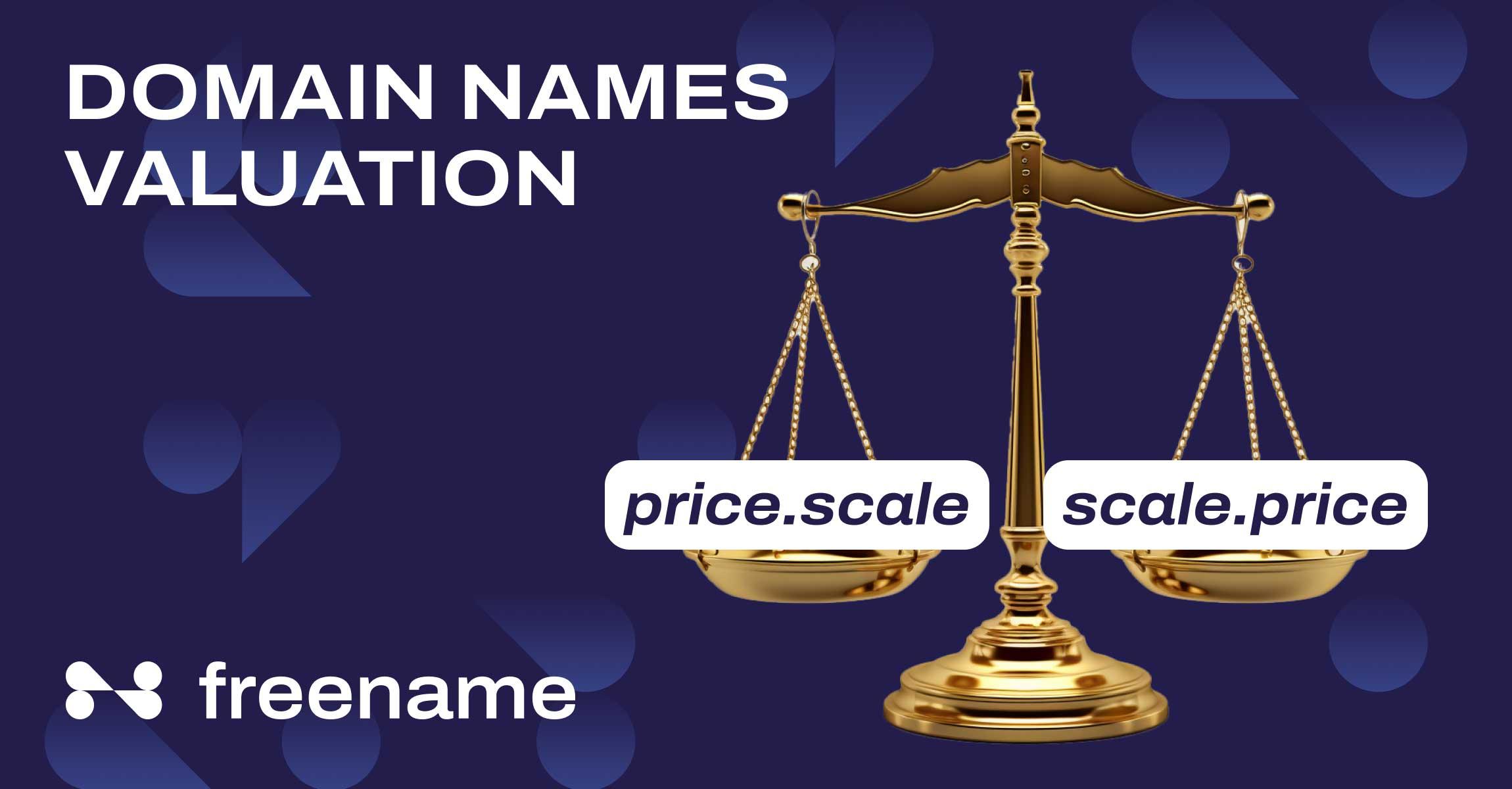Table of Contents
- Understanding the Domain Flipping Landscape
- Essential Strategies for Acquiring Valuable Domains
- Valuation Techniques to Assess Domain Worth
- Marketing Your Domains for Maximum Profit
- Navigating the Legal Aspects of Domain Sales
- Q&A
- Insights and Conclusions
Understanding the Domain Flipping Landscape
The domain flipping market is a vibrant and dynamic space where savvy investors buy and sell domain names for profit. As this landscape continues to evolve, it’s essential to understand its driving factors. First and foremost, the value of a domain often hinges on its simplicity and memorability. Short, catchy names with relevant keywords can fetch higher prices because they are easier for users to remember and increase direct traffic. Keep an eye on emerging trends, as domains related to trending topics or innovations can skyrocket in value overnight.
Another critical element in this marketplace is the process of research and evaluation. Before purchasing a domain, conducting thorough research is vital. Useful strategies include:
- Analyzing domain extension popularity (e.g., .com, .net, .org)
- Utilizing tools to check historical sales data of similar domains
- Assessing the domain’s SEO value, including its backlink profile
Flipping domains is not merely about buying low and selling high; it’s also about effective branding and marketing strategies. Once you’ve acquired a desirable domain, consider developing a basic landing page to increase its visibility. This tactic can demonstrate the domain’s potential to prospective buyers. Additionally, networking with other domain investors and participating in online marketplaces can enhance your chances of closing sales. Here’s a quick look at effective marketing channels:
| Channel | Benefits |
| Domain Marketplaces | Wider audience & direct buyers |
| Social Media | Increased visibility & engagement |
| Forums & Communities | Networking with potential buyers |


Essential Strategies for Acquiring Valuable Domains
Acquiring valuable domains requires a strategic approach that includes thorough research and historical market insights. Begin by leveraging domain name research tools that help you identify high-potential names. Look for domains that are short, memorable, and brandable. Additionally, analyze the existing trends in your target niche—domains that resonate with current topics or cater to emerging markets often see a higher return on investment. For example, the rise of environmental consciousness means eco-related domains are increasingly sought after.
Another effective strategy is to focus on expired or off-market domains that have existing backlinks or a rich history. Utilizing tools like Ahrefs or SEMrush can unveil domains that have dropped but still possess authority. Consider creating a list of potential domains based on their previous traffic performance and backlink quality. Engaging with domain auction sites can also yield opportunities to snag valuable domains before they become public knowledge, ensuring you remain a step ahead in the flipping game.
Lastly, build a network within the domain industry. Joining forums and attending conferences can lead to exclusive insights and partnership opportunities. Don’t shy away from seeking advice or mentorship from experienced flippers. Maintain a focused inventory of domains tailored to specific markets, as it’s easier to target potential buyers when you have a niche focus. Here’s a brief look at some strategies that could enhance your domain hunting prowess:
| Strategy | Description |
|---|---|
| Keyword Research | Identify trending keywords in your niche for better domain relevance. |
| Expired Domains | Search for domains that have lost registration, but have existing authority. |
| Networking | Engage with industry professionals for mentoring and insider tips. |


Valuation Techniques to Assess Domain Worth
When diving into the world of domain flipping, accurately assessing the value of a domain name is crucial. Various valuation techniques can help you determine its worth, ensuring that you buy low and sell high. One common method is comparative market analysis, which involves examining the sale prices of similar domain names in the market. This approach allows you to gauge the potential selling price based on trends and buyer interest. Additionally, tools like Estibot and GoDaddy’s appraisal feature can be useful in providing valuation metrics based on algorithms that analyze multiple factors.
Another effective technique is the income approach, where the domain’s value is estimated based on its potential to generate revenue. This is particularly relevant for premium or commercially valuable domains that can drive traffic or be developed into profitable websites. Factors to consider in this approach include traffic statistics, historical earnings, and advertising revenue potentials. A thorough understanding of how much revenue a domain could realistically bring in will give you an edge when negotiating prices.
considering the intrinsic value of a domain name is indispensable. This involves looking at qualitative factors that might not be reflected in market data but can still significantly impact value, such as domain length, keywords, and brandability. Short, memorable domains with popular keywords tend to have higher value due to their desirability for businesses looking to establish a strong online presence. To illustrate this concept, the table below showcases some attributes that can enhance a domain’s intrinsic worth:
| Attribute | Description | Impact on Value |
|---|---|---|
| Keyword Relevance | Contains popular search terms | Increases visibility and desirability |
| Length | Shorter names are easier to remember | Higher perceived value |
| Brandability | Unique and catchy names | Increased demand from startups |


Marketing Your Domains for Maximum Profit
Once you’ve acquired a selection of valuable domains, the next step is to strategically market them to attract potential buyers. One effective method is to create a dedicated landing page for each domain. Ensure that the landing page includes key details about the domain’s benefits, potential uses, and its keyword strength. Don’t forget to incorporate SEO best practices—this will help improve visibility in search engines and draw organic traffic. Consider these essential elements:
- Attention-grabbing headlines: Clearly convey the unique selling points of the domain.
- Visuals: Use appealing graphics or logos related to the domain to draw interest.
- Call to Action (CTA): Guide visitors on what to do next, whether it’s contacting you or making a purchase.
Another effective approach is leveraging social media platforms and online forums where domain buyers tend to gather. Creating comprehensive posts that highlight the potential of the domains can generate buzz. Platforms like Twitter, Facebook, and LinkedIn allow you to share insights about the domain’s niche market, trends, and success stories. Consider the following platforms for targeted outreach:
| Platform | Audience Type | Best Use |
| Entrepreneurs | Quick updates and promotions | |
| Facebook Groups | Domain enthusiasts | Engagement and community building |
| Business professionals | Networking and B2B marketing |
Don’t overlook the value of marketplaces that specialize in the buying and selling of domains. Platforms such as GoDaddy Auctions, Flippa, and NameJet provide a marketplace where you can list your domains for sale to a broader audience. These platforms often come with built-in traffic and user engagement, but to stand out, ensure your listings are compelling. Use high-quality images, detailed descriptions that emphasize the value and versatility of the domain, and a clear pricing structure to entice serious buyers.


Navigating the Legal Aspects of Domain Sales
When diving into the world of domain flipping, understanding the legal landscape is crucial to avoid pitfalls that could derail your business. First, consider the importance of trademark issues. Before purchasing a domain, conducting a thorough search for existing trademarks can save you from potential legal battles. Using tools like the USPTO trademark database can help ascertain whether your desired domain name is already protected. If it is, altering your choice is not just advisable but necessary.
Next, familiarize yourself with the ICANN regulations. The Internet Corporation for Assigned Names and Numbers (ICANN) sets forth guidelines governing domain registrations. Adhering to these regulations ensures that your domain transactions are valid and recognized nationally and globally. Some key ICANN policies include:
- Registration Transfers: Understand the processes involved in transferring domain ownership legally.
- Dispute Resolution Policies: Familiarize yourself with processes like the UDRP (Uniform Domain-Name Dispute-Resolution Policy) in case of conflicts.
- Renewal Rights: Keep track of renewal deadlines and policies to maintain ownership.
Lastly, consider the potential need for contracts when dealing with buyers or sellers. Drafting a clear and concise sales agreement can delineate the terms of the sale, protecting both parties involved. Essential elements to include in your contract are:
| Contract Element | Description |
|---|---|
| Domain Name | Specify the exact domain being sold. |
| Sale Price | Outline the agreed-upon price for the domain. |
| Payment Terms | Detail how and when payments will be made. |
| Transfer Process | Include steps for transferring domain ownership legally. |
Q&A
Q&A: Starting Your Journey in Domain Flipping
Q1: What is domain flipping?
A1: Domain flipping is the practice of buying domain names at a low price and selling them at a higher price for profit. It’s akin to real estate investing but in the digital world. Flippers purchase domains that they believe have potential value and sell them to interested buyers or businesses looking for the perfect domain to establish their online presence.Q2: Why should I consider getting into domain flipping?
A2: Domain flipping can be an appealing venture due to its relatively low startup costs and the potential for high returns. With the growing importance of having a strong online presence, businesses and individuals are always on the lookout for memorable and relevant domain names. If you’re savvy about market trends and have an eye for valuable domain names, it can turn into a profitable side hustle or even a full-time gig.Q3: How do I choose the right domain names to flip?
A3: Successful domain flipping starts with proper research. Here are some tips:- Keyword Relevance: Look for domains containing popular keywords that people search for.
- Length: Shorter domain names are often more desirable as they are easier to remember.
- Extensions:
.comdomains are traditionally more valuable, but don’t overlook newer extensions like.techor.io, especially within niche markets. - Trends: Keep an eye on emerging trends or industries, as timely purchases can pay off significantly.
Q4: How much should I invest in my first domain purchase?
A4: It’s wise to start small, investing anywhere from $10 to $100 on your first few domains. This lower investment allows you to experiment and learn without risking too much capital. As you gain experience and begin to understand the market better, you can gradually increase your investment in higher-value domains.Q5: Where can I buy and sell domain names?
A5: You can buy and sell domain names through various online platforms. Popular registrars like GoDaddy, Namecheap, and Google Domains allow for direct purchases, while marketplaces like Flippa, Sedo, and Afternic are excellent places to list your domains for sale. Research these platforms to find the one that best suits your needs.Q6: What’s the importance of branding in domain flipping?
A6: Branding plays a crucial role in domain flipping. A well-branded domain name can attract buyers more easily because it conveys credibility and conveys the essence of a business. When considering domains, think about how they might fit into a brand narrative or identity. Domains that resonate with specific audiences can significantly enhance their value.Q7: How do I market my domains effectively?
A7: Marketing your domains requires a strategic approach:- Targeted Outreach: Identify businesses or individuals who might benefit from your domain and reach out directly.
- Social Media: Utilize platforms like LinkedIn, Facebook, and Twitter to showcase your domains to relevant audiences.
- SEO Strategies: If you have an interesting story or a blog about your domain flipping journey, utilize SEO best practices to drive organic traffic to your listings.
- Marketplace Features: Leverage the promotional tools offered by domain marketplaces to increase visibility.

